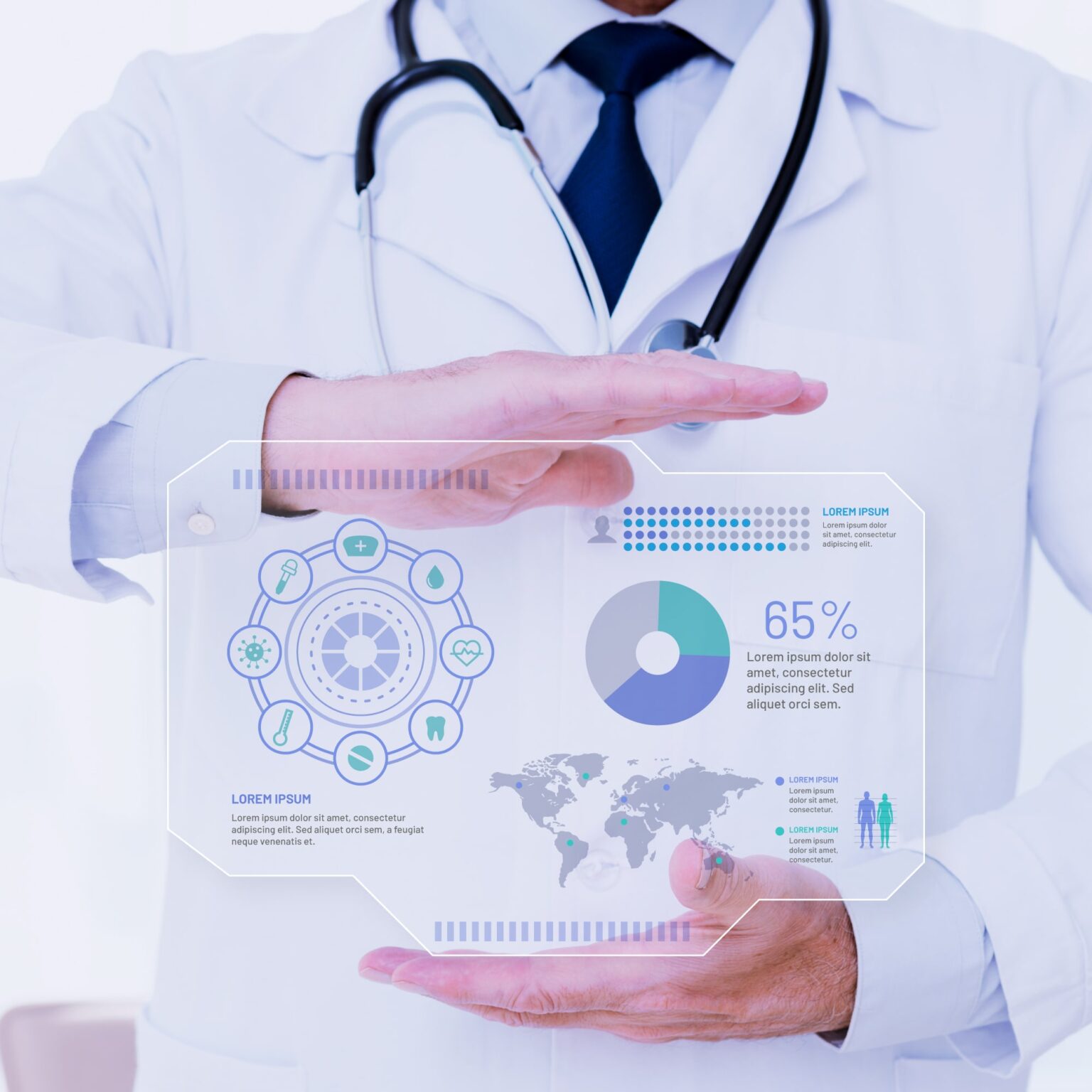Healthcare data analytics harnesses big data, machine learning, and predictive analytics to drive insights, improve population health, and enhance clinical decision-making. Here’s how healthcare organizations leverage data analytics to achieve these goals:
Contents
Big Data Infrastructure:
- Data Aggregation: Healthcare organizations aggregate vast amounts of structured and unstructured data from electronic health records (EHRs), medical devices, wearables, and other sources. Big data infrastructure, including data lakes and warehouses, centralizes data storage, processing, and analysis for actionable insights.
- Interoperability: Integrating disparate data sources and systems enables interoperability, data exchange, and continuity of care across healthcare settings. Health information exchanges (HIEs), application programming interfaces (APIs), and standards such as Fast Healthcare Interoperability Resources (FHIR) facilitate seamless data sharing and interoperability.
- Real-Time Analytics: Real-time data analytics platforms enable continuous monitoring, surveillance, and alerting for early detection of disease outbreaks, adverse events, and patient safety risks. Streaming analytics, complex event processing (CEP), and artificial intelligence (AI) algorithms support real-time decision support and intervention in clinical workflows.
Machine Learning Algorithms:
- Predictive Modeling: Machine learning algorithms analyze historical data to predict future outcomes, trends, and patient risks in healthcare. Predictive models identify patients at high risk of readmissions, medication non-adherence, or disease progression, enabling targeted interventions, care coordination, and preventive measures.
- Clinical Decision Support: Machine learning-powered clinical decision support systems (CDSS) provide evidence-based recommendations, treatment guidelines, and personalized care plans to healthcare providers at the point of care. CDSS algorithms integrate patient data, clinical guidelines, and best practices to support diagnostic reasoning and treatment planning.
- Risk Stratification: Machine learning algorithms stratify patient populations based on risk factors, comorbidities, and social determinants of health (SDOH) to prioritize interventions, allocate resources, and optimize care management strategies. Risk prediction models identify high-risk patients for targeted interventions, care coordination, and population health management initiatives.
Predictive Analytics:
- Population Health Management: Predictive analytics inform population health management strategies, disease prevention programs, and public health interventions. Population health analytics identify trends, disparities, and health needs within communities, guiding policy decisions, resource allocation, and health promotion efforts.
- Chronic Disease Management: Predictive analytics optimize chronic disease management by identifying patients at risk of disease exacerbations, complications, or poor outcomes. Risk prediction models tailor care plans, medication regimens, and lifestyle interventions to individual patient needs, improving health outcomes and quality of life.
- Resource Allocation: Predictive analytics guide resource allocation, capacity planning, and healthcare resource utilization to optimize operational efficiency and patient flow. Demand forecasting models, bed management algorithms, and predictive staffing tools ensure timely access to care, reduce wait times, and minimize healthcare disparities.
Data-Driven Insights:
- Clinical Insights: Healthcare data analytics generate actionable insights, trends, and patterns from clinical data to inform evidence-based practice, quality improvement initiatives, and clinical research. Data visualization tools, dashboards, and reporting platforms facilitate data-driven decision-making and performance monitoring across healthcare organizations.
- Quality Metrics: Healthcare analytics measure and track key performance indicators (KPIs), quality metrics, and outcome measures to assess healthcare delivery, patient safety, and care effectiveness. Quality improvement initiatives, benchmarking, and performance feedback loops drive continuous quality improvement and accountability in healthcare delivery.
- Patient Engagement: Data analytics inform patient engagement strategies, health promotion campaigns, and patient education initiatives to empower individuals in managing their health and well-being. Personalized health insights, behavioral nudges, and self-management tools foster patient activation, adherence, and shared decision-making in healthcare.
Challenges and Future Directions:
- Data Governance: Ensuring data governance, privacy, and security is essential to protect patient confidentiality, comply with regulatory requirements, and maintain trust in healthcare data analytics. Data governance frameworks, access controls, and encryption protocols safeguard sensitive health information from unauthorized access or breaches.
- Data Quality and Integrity: Addressing data quality issues, data fragmentation, and data silos is critical to ensure the accuracy, completeness, and reliability of healthcare data analytics. Data cleansing, standardization, and validation processes improve data integrity and consistency for meaningful analysis and decision-making.
- Interdisciplinary Collaboration: Fostering interdisciplinary collaboration among clinicians, data scientists, informaticians, and healthcare stakeholders is essential to leverage the full potential of healthcare data analytics. Collaborative partnerships, knowledge sharing, and cross-functional teams drive innovation, problem-solving, and transformative change in healthcare delivery.
- Ethical Considerations: Addressing ethical considerations such as bias, fairness, and transparency in healthcare data analytics is paramount to ensure equity, accountability, and patient-centered care. Ethical guidelines, algorithmic transparency, and responsible AI practices promote ethical use of data analytics and mitigate unintended consequences in healthcare.
- Continuous Innovation: Embracing continuous innovation, emerging technologies, and best practices in healthcare data analytics enables organizations to stay ahead of evolving challenges and opportunities. Investing in research and development, pilot projects, and innovation labs fosters a culture of innovation and agility in healthcare organizations.
In summary, healthcare data analytics leverages big data, machine learning, and predictive analytics to drive insights, improve population health, and enhance clinical decision-making. By addressing challenges in data governance, quality, interdisciplinary collaboration, and ethical considerations, healthcare organizations harness the power of data analytics to transform healthcare delivery and improve patient outcomes in the digital era.



